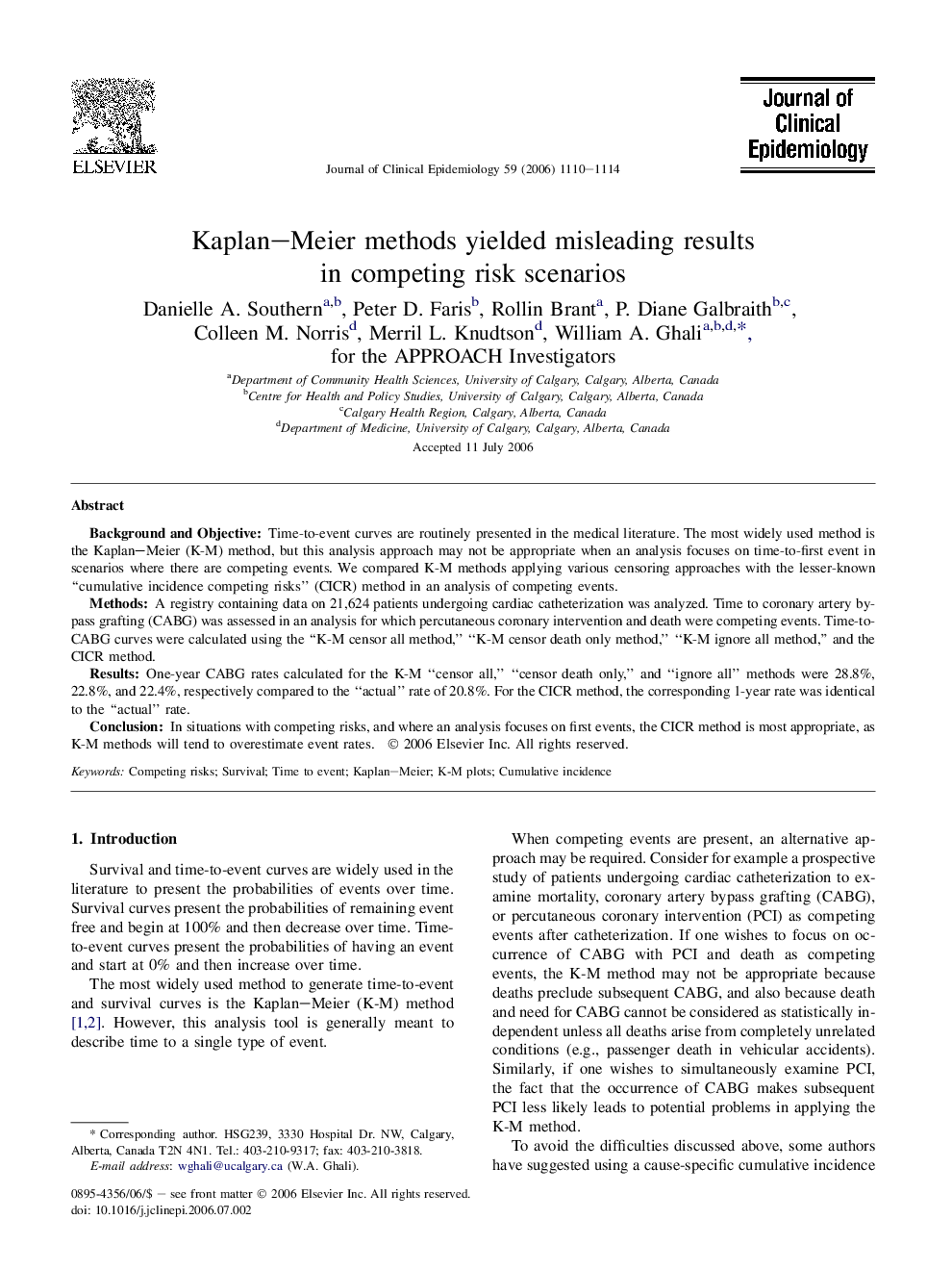| کد مقاله | کد نشریه | سال انتشار | مقاله انگلیسی | نسخه تمام متن |
|---|---|---|---|---|
| 1083303 | 950993 | 2006 | 5 صفحه PDF | دانلود رایگان |

Background and ObjectiveTime-to-event curves are routinely presented in the medical literature. The most widely used method is the Kaplan–Meier (K-M) method, but this analysis approach may not be appropriate when an analysis focuses on time-to-first event in scenarios where there are competing events. We compared K-M methods applying various censoring approaches with the lesser-known “cumulative incidence competing risks” (CICR) method in an analysis of competing events.MethodsA registry containing data on 21,624 patients undergoing cardiac catheterization was analyzed. Time to coronary artery bypass grafting (CABG) was assessed in an analysis for which percutaneous coronary intervention and death were competing events. Time-to-CABG curves were calculated using the “K-M censor all method,” “K-M censor death only method,” “K-M ignore all method,” and the CICR method.ResultsOne-year CABG rates calculated for the K-M “censor all,” “censor death only,” and “ignore all” methods were 28.8%, 22.8%, and 22.4%, respectively compared to the “actual” rate of 20.8%. For the CICR method, the corresponding 1-year rate was identical to the “actual” rate.ConclusionIn situations with competing risks, and where an analysis focuses on first events, the CICR method is most appropriate, as K-M methods will tend to overestimate event rates.
Journal: Journal of Clinical Epidemiology - Volume 59, Issue 10, October 2006, Pages 1110–1114